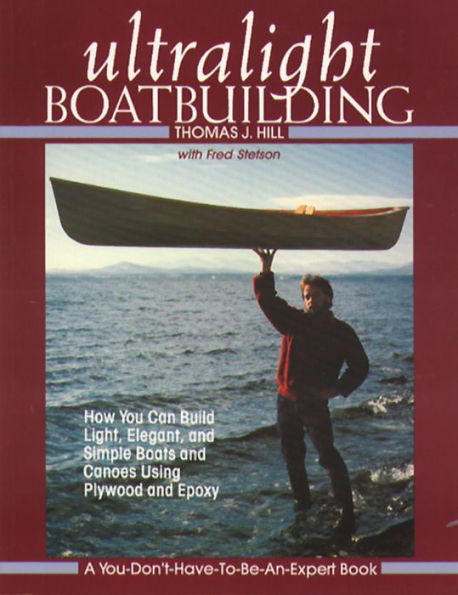All the information you need is here. Tom Hill, the chief proponent of ultralight boatbuilding and its leading practitioner, describes the method from start to finish using a skiff and canoe as examples. In the appendix is a gallery of ultralight designs, all but one of which you can build without lofting. If you want more flexibility, however, you can adapt almost any lapstrake small-boat design, traditional or modern, to the ultralight method. With some lofting (directions for which are given) you may then build a wide range of boats whose offsets are available. And you may adjust planking thickness and scantlings to give your boat extremely light weight with normal strength, or moderate weight with great strength.
Particularly if you lack an extensively equipped workshop and professional skills, Ultralight Boatbuilding will unlock exciting possibilities you considered out of reach.
All the information you need is here. Tom Hill, the chief proponent of ultralight boatbuilding and its leading practitioner, describes the method from start to finish using a skiff and canoe as examples. In the appendix is a gallery of ultralight designs, all but one of which you can build without lofting. If you want more flexibility, however, you can adapt almost any lapstrake small-boat design, traditional or modern, to the ultralight method. With some lofting (directions for which are given) you may then build a wide range of boats whose offsets are available. And you may adjust planking thickness and scantlings to give your boat extremely light weight with normal strength, or moderate weight with great strength.
Particularly if you lack an extensively equipped workshop and professional skills, Ultralight Boatbuilding will unlock exciting possibilities you considered out of reach.

Ultralight Boatbuilding
144
Ultralight Boatbuilding
144Paperback

Product Details
| ISBN-13: | 9780071567039 |
|---|---|
| Publisher: | McGraw Hill LLC |
| Publication date: | 01/01/1987 |
| Pages: | 144 |
| Product dimensions: | 8.50(w) x 10.90(h) x 0.37(d) |
